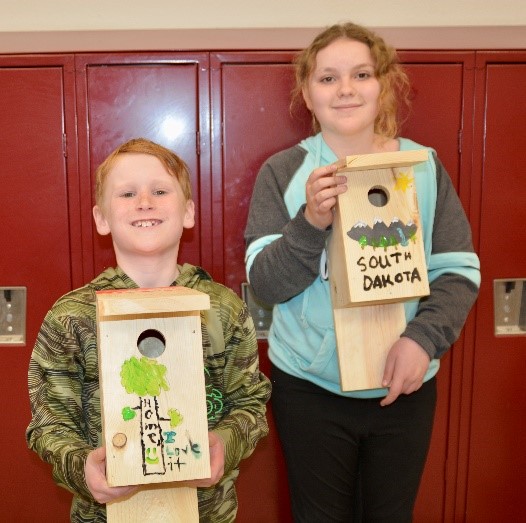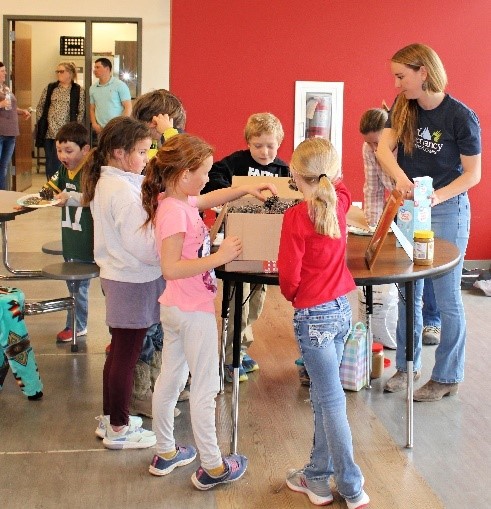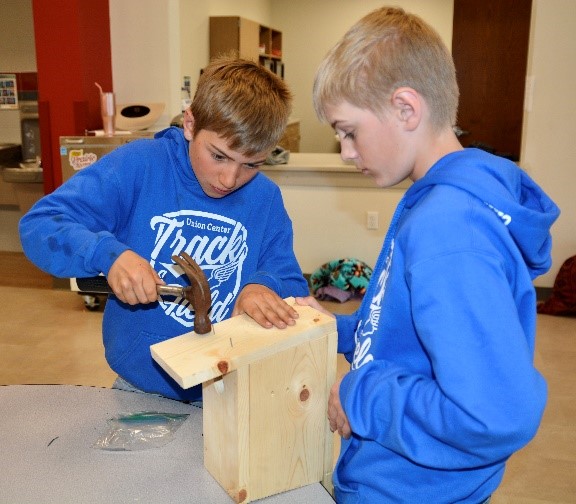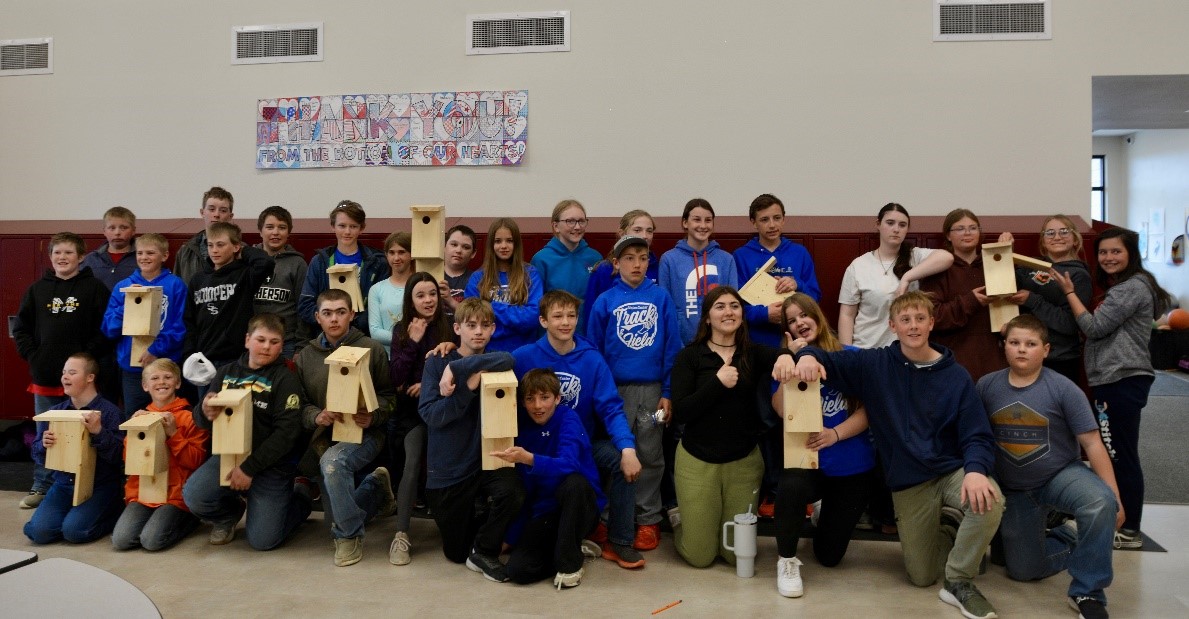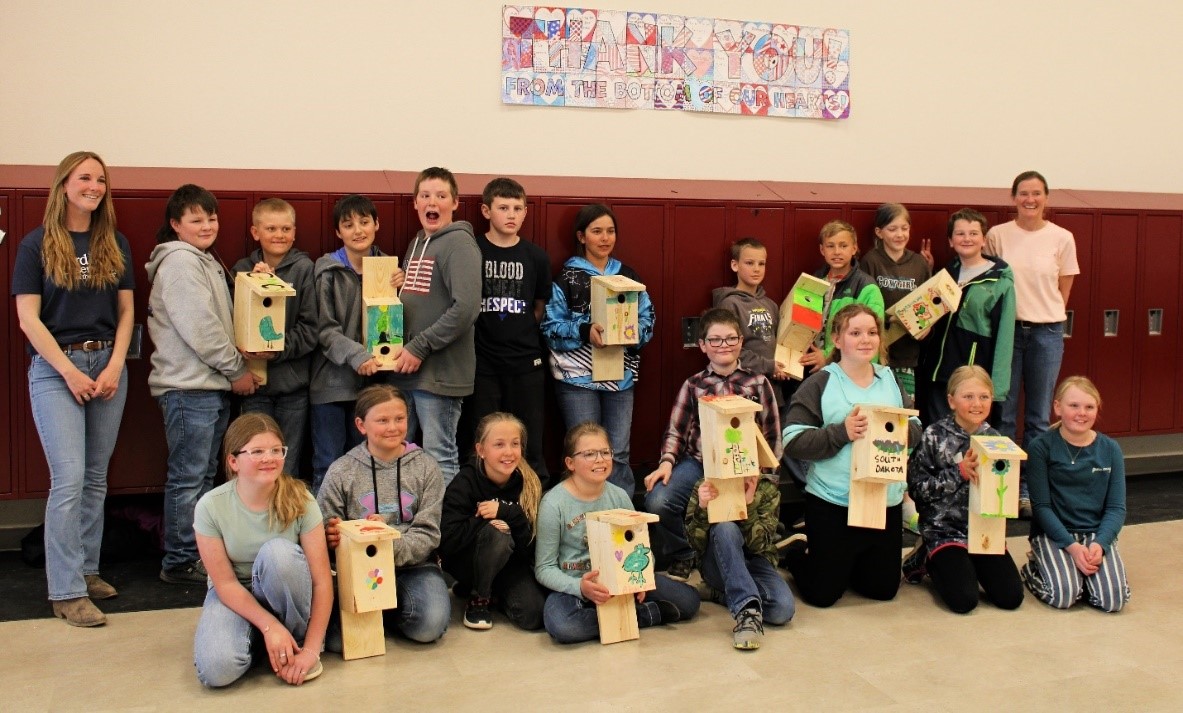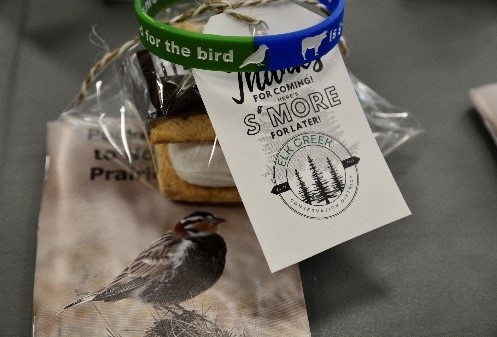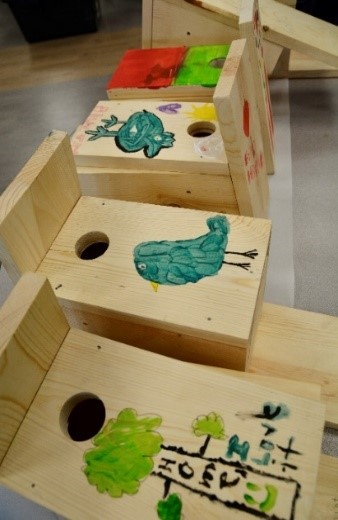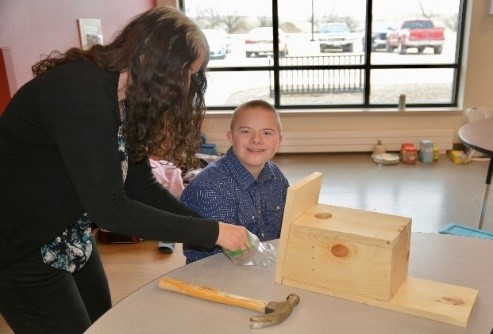“When we see land as a community to which we belong, we may begin to use it with love and respect”.
One of my favorite quotes by Aldo Leopold in his book, A Sand County Almanac. A classic read for any upcoming wildlife biologist, nature-lover, or outdoors person. This quote reminds me of the well-known saying “leave it better than you found it”. A saying that had been engrained in me ever since I was just a kid playing in the river behind my house. I am fortunate that I grew up as an “outdoor kid”. I spent my childhood roaming around the woods and fields with the neighborhood crew. Getting in trouble when I came home too late after dark and in even greater trouble when I would bring frogs, salamanders, and snakes into the house.
Growing up outdoors is what led me to pursue a career with the Bird Conservancy of the Rockies as a Private Lands Wildlife Biologist working in western South Dakota. Sure, biologists are never really “rolling in the dough”, but in so many ways, nature has brought a sense of richness and fulfillment into my life. Today, in a society rich in phones, TVs, and screen-time, many children are losing that connection to nature. Losing that connection to the land, to where their food comes from, to wildlife. The land raised me, it raised you, and it will raise our children and grandchildren. But what about that disconnect to nature? Like a cellphone trying to get service on the backroads of South Dakota, how do we restore this connection?
- Students showing off their bluebird boxes
- PLWB Olivia Lappin getting the students set up for pinecone bird feeders. Photo by Jo Knutson, NRCS
- Students working together to build their bluebird box.
South Dakota boasts such amazing natural resources, from the Black Hills to the Badlands or even the vast amount of some of the last remaining intact grasslands in the world! With grassland birds experiencing the fastest and greatest declines (~53% loss since 1970) compared to any other group of birds in North America, South Dakota holds a real treasure.
Recently, I had the opportunity to attend a rural school day event out of Union Center, South Dakota. I had originally planned to give a presentation on bird adaptations, but was fortunate to connect with Julia Brazell from The Nature Conservancy who was kind enough to supply me with some unassembled bluebird boxes and offered to help me build them with the school groups. We had five different rural schools (K-8) attend the event with 100 students!
- The class proudly showing their work for conservation
- Olivia and students. Photo by Jo Knutson, NRCS
I had the fortune of working with K-2nd graders and they were great! We created peanut butter and bird seed covered pinecone birdfeeders that the students could hang on a tree at their school. However, forgetting that we are in South Dakota where trees are naturally limited because we live in a prairie, the students took them home instead which they loved. Following the youngest age group, I was able to work with the 6th– 8th grade students, who were so excited to build the bluebird boxes! It’s not every day that students get to work with hammers and nails to construct bird boxes at school. Julia and I were a little worried about completing ten bird boxes in 30 minutes, but the students did an incredible job. You might think that building a bird box is easy, but there are many little features to pay attention to. For example, making sure not to nail one side shut for an opening door and leaving a small space between the roof and sides for proper aeration. The students executed the steps perfectly. I bet growing up as a rural school kid on your family’s ranch gives you some skilled advantages in the “build it and fix it” department. My last group of the day was the 3rd– 5th graders who were able to paint the bluebird boxes that were built in the group prior. So much individual creativity was brought to each of the boxes. One of my favorite boxes having “Home Tweet Home” painted in yellow on the front.
Each school got to bring one of the bluebird boxes back to their school to hang up. Julia and I held onto two boxes each that we plan to hang up at Whitney Preserve in Hot Springs and at another public area closer to the schools in hopes that the students might take their families out to visit (and hopefully see the boxes being used by some bluebirds!). Aside from myself and Julia creating the bird boxes with the students, each group participated in other activities ranging from soils to natural resources, and forestry.
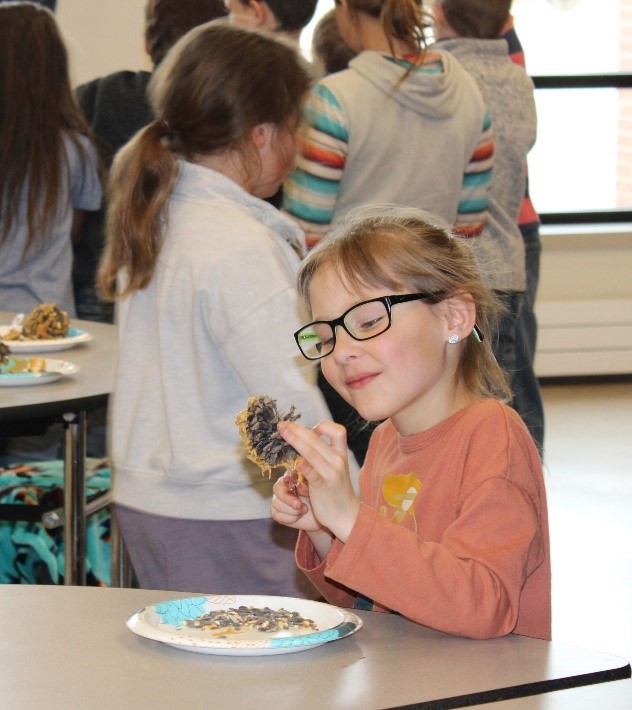
Student creating their own pinecone bird feeder to take home.
It was refreshing to spend the day with students and see their excitement about the bird boxes and birdfeeders. I remember making the pinecone bird feeders when I was in first grade. No, that probably was not what led me down the path to become a biologist, but I still remember it today and maybe it did nudge me in the direction of becoming a “bird nerd”. I hope that the students enjoyed the day learning about all kinds of natural resources and the importance of protecting them. I feel deeply that it is our duty to teach our children to give back to the land all that we can, for it has provided us with so much.
- All students were able to take home a conservation care package!
- Examples of the art for the bluebird boxes
- A student happily working on building their bluebird box
“A land ethic of course cannot prevent the alteration, management, and use of these ‘resources’, but it does affirm the right to continued existence, and, at least in spots, their continued existence in a natural state. In short, a land ethic changes the role of Homo sapiens from conqueror of the land community to plain member and citizen of it. It implies respect for his fellow members, and also respect for the community as such” – Aldo Leopold in A Sand County Almanac.
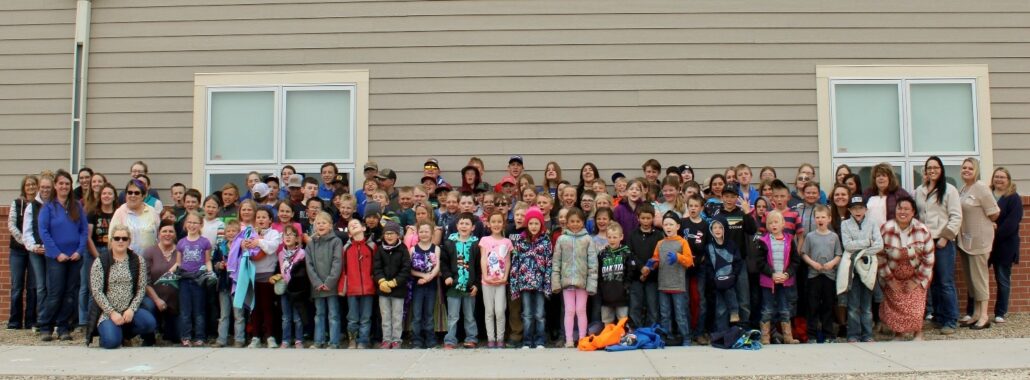
Thank you for letting us participate in your Rural School Day event!
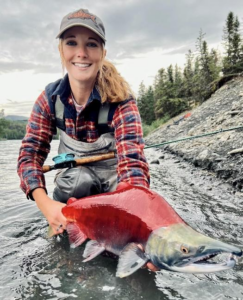 Olivia Lappin is a Private Lands Wildlife Biologist with Bird Conservancy of the Rockies, based in Sturgis, South Dakota in partnership with the USDA: Natural Resources Conservation Service, South Dakota Game, Fish and Parks and the National Fish and Wildlife Foundation.
Olivia Lappin is a Private Lands Wildlife Biologist with Bird Conservancy of the Rockies, based in Sturgis, South Dakota in partnership with the USDA: Natural Resources Conservation Service, South Dakota Game, Fish and Parks and the National Fish and Wildlife Foundation.
Visit our Education page to learn more about how we connect people of all ages to birds and their habitats.


